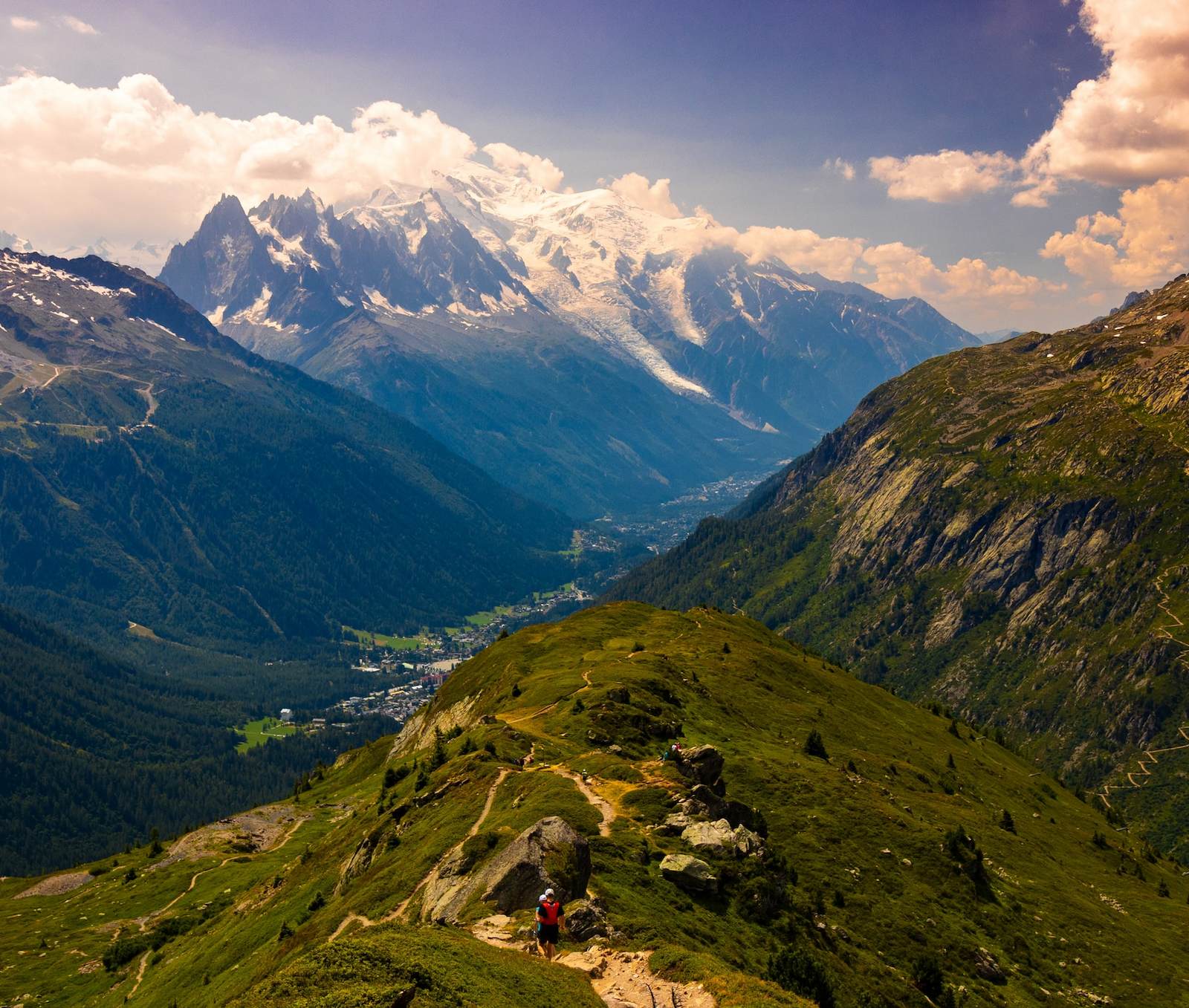
The Tour du Mont Blanc has been around for donkeys years. We think there's something pretty special about that. That through the generations, the mountains remain, beautiful as ever.
Fancy joining us on a 4 day hassle free trip where all the planning, logistics, and accommodation are all taken care of for you? Check out our Tour du Mont Blanc Best Bits adventure
This is a real belter of a trail, a stunning multi-day hike that will take you through meandering alpine meadows, panoramic trails, dense pine forests, towering peaks capped with snow and into the three (cheese-filled) countries of France, Italy and Switzerland.
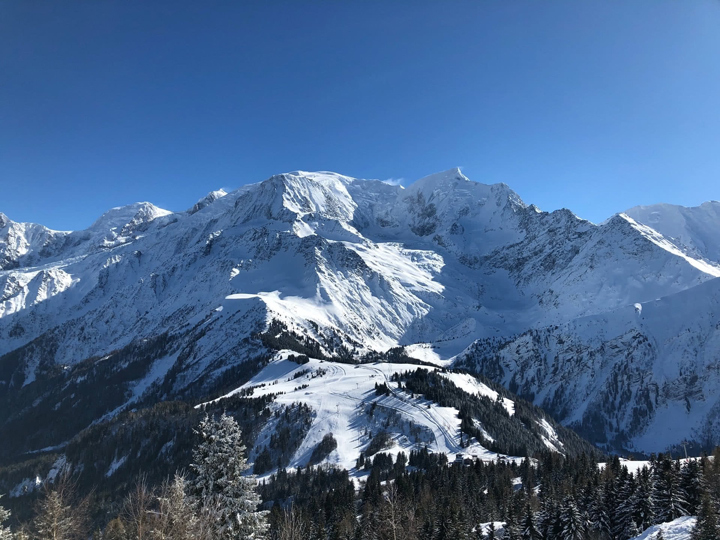
The Tour du Mont Blanc is, quite literally, a tour around Mont Blanc, the highest summit in the Alps. It's a 170km, 2-week long distance walking adventure that circumnavigates Mont Blanc and takes you through the dramatic Alpine scenery of France, Switzerland and Italy. It is without a doubt one of the most spectacular long distance walks in the world, and unlike the PCT, can be done in just 2 weeks of annual leave!
The hike takes in winding picturesque valleys, glacial rivers, steep mountain passes and stunning panoramas of one of the most epic mountain ranges in the Alps. Oh, and three countries worth of Alpine food. So, what are you waiting for?
The Tour du Mont Blanc circuit is one of the oldest long distance treks in the world. That's to say, people have been completing this exact circuit since Roman times (look out for remnants of ancient roman footbridges!)
The path went on being used out of necessity for centuries; for traders, for shepherds moving their cattle and other rural workers, until it eventually garnered public attention by Swiss geologist Horace-Bénédict De Saussure.
De Saussure, desperate to be involved in the first to summit Mont Blanc, discovered the TMB route by walking around the mountain in order to discover the best path up. He offered a reward to the first summiteers, which was claimed in 1786 by Chamonix locals Michel Paccard and Jacques Balmat, and swiftly followed them up as the third.
The trek is often listed as one of the top 10 hikes in the world, a bucket list adventure, up there with the Annapurna Circuit in the Himalaya and the Cordillera Huayhuash trek in Peru.
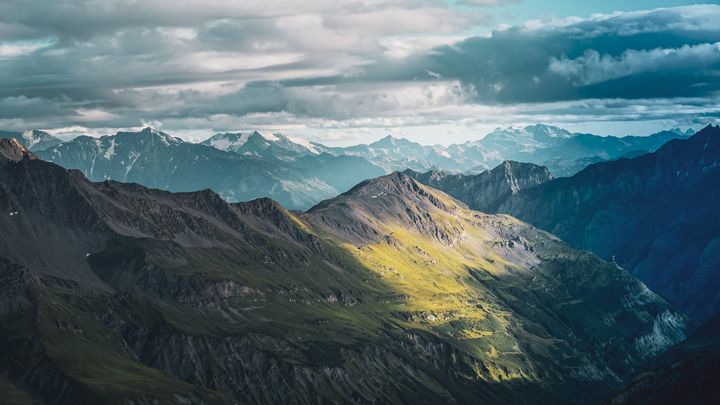
Well, if we didn't already sell it on the incredible views and Alpine cuisine, we have a soft spot for hikes that aren't intent on 'peak-bagging'. Sure, you'll summit plenty of peaks on this trek, but that's more because the path goes over them, as opposed to ticking as many off as you can. Hikes that are about immersing yourself in the scenery, soaking up the views and the feel of the place, rather than trying to tick off a summit, are what we love.
It is a curious hobby, and mostly a Western one, to summit peaks. By many cultures and religions it is considered at worst unholy and at best simply odd to want to stand on top of a mountain. We do get it, the views are great and it makes you feel accomplished. But why not try a hike that meanders through the rivers and valleys, with no other aim but to complete the circle?
170km of pure Alpine beauty is why you should hike the Tour du Mont Blanc. Epic views, charming villages, snow-capped mountain scenery, gushing glacial rivers and Alpine wildlife are all highlights of the trail, and that's not even mentioning the Après scene back in Chamonix.
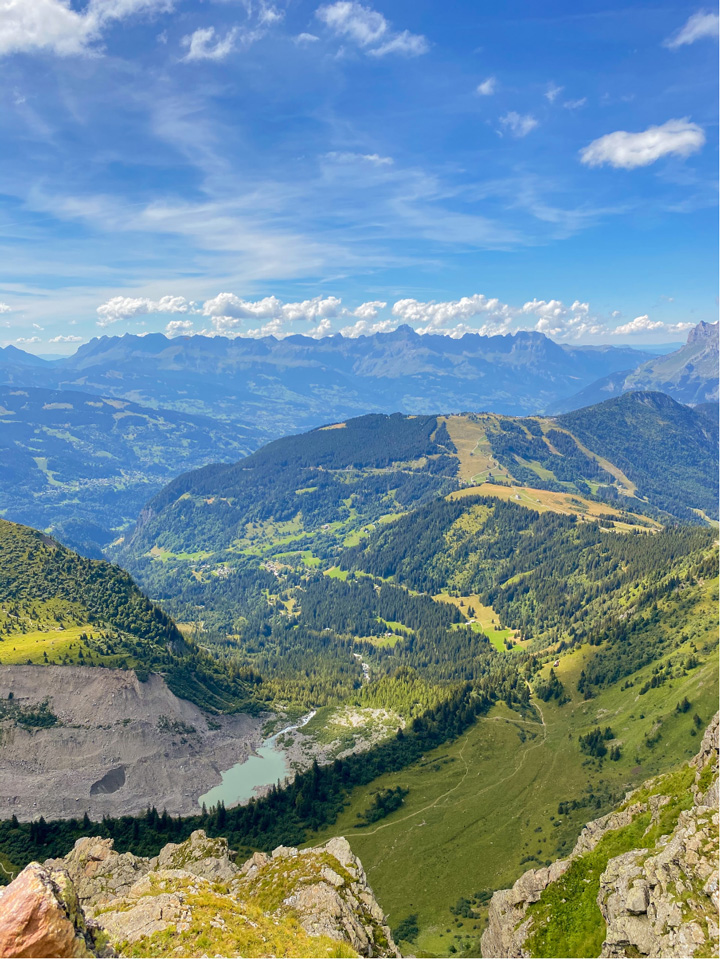
The Tour du Mont Blanc route begins and ends in Chamonix, otherwise known as the 'adventure capital of the world. A Mecca indeed for mountain enthusiasts and a must-visit for anyone who's interested in Alpine sports. It's always busy with skiers, climbers, hikers and mountain bikers and has the kind of buzz to it that makes you want to go out and explore.
Below is a sample itinerary, though you can take as long as you want to complete it, as long as you can secure the accommodation.
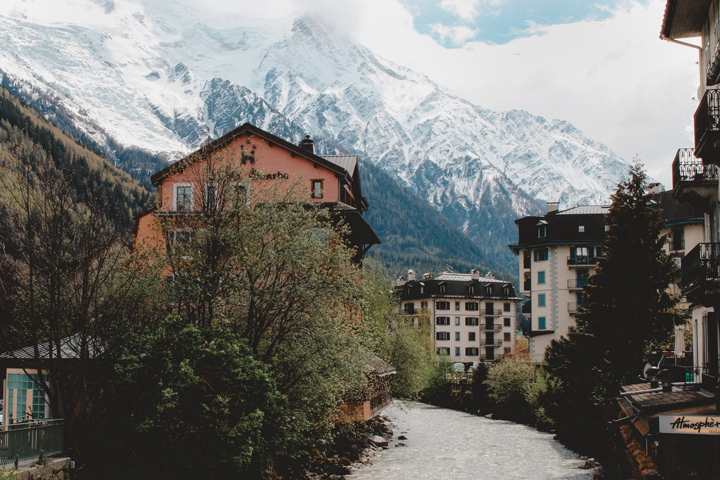
Your first day begins as you step onto French soil! Enjoy your afternoon or evening in Chamonix, the alpinist's heaven on Earth. Hit up Poco Loco for banging burgers, La Micro Brasserie du Chamonix for craft beers and stock up on maps and books at the Maison de la Presse.
Wandering the streets in Chamonix is a real treat. It's full of indy clothes boutiques and furniture shops, gelato stands and traditional bakeries. If you've got a few days, why not head up the infamous Aiguille du Midi and see the trail you'll be doing from the top of Mont Blanc? Either way, soak it all up and get some rest in for the first day of your trip!
A cable car ride up to Planpraz takes you to the start of your Tour du Mont Blanc hiking adventure. You'll head up the Col du Brévent pass and up onto Le Brévent's summit where you'll be rewarded with your first views of Mont Blanc.
Continue on to the Bellachat refuge for a cup of tea before heading up the summit of Aiguillette des Houches. After more epic Mont Blanc views you'll descend all the way down into the village of Les Houches, a popular ski resort with a great restaurant scene. Enjoy that first tartiflette of the trip!
Hop on the Bellevue cable car in the morning and enjoy the views at 1800m as it drops you at the foot of Mont Blanc. Undoubtedly one of the best views on the Tour du Mont Blanc. You'll traverse a Nepalese style bridge across the epic Bionnassay Glacier (hopefully seeing some ibex as you go!) and hike through pastoral farming landscapes.
Expect everything from forests, fields, rock trails and wobbly bridges as you wind up the Col de Tricot pass and back down into the valley until you hit the village of Contamines-Montjoie.
Day 4 of the Tour du Mont Blanc takes you straight up a steady climb up the Col du Bonhomme (remember the ancient Roman bridges we were talking about? That's up here!) with stunning views of the Mont Blanc massif and the Beaufortain mountains.
Sandwich with a view guzzled, it's time for the descent down the Col de la Croix-du-Bonhomme and into the Alpine hamlet of Les Chapieux. No phone signal here, you're truly into the depths of Alpine wilderness - does it feel good?
If you like, detour to a local farm to learn how Beaufort cheese is made, before heading up for the day. You have to load up on energy, right? Then you'll be heading up the Col de Seine at 2516m, straddling the French-Italian border.
Mont Blanc pokes it head out again, ever giving you more angles to see it's beautiful summit from. Descending down into Val Veny and down to the stunning Miage Glacier you'll be into Italy before you know it (can you smell the pizza yet?)
Trekking towards Courmayeur will treat you to a panorama of towering 4000m peaks and glacial valleys, before landing in the famous ski village for steaming bowls of pasta and Apérol Spritzes.
Congratulations, you're halfway through your your Tour du Mont Blanc trek! Boy is today a good day. You'll head up through beautiful alpine woodland towards Refuge Bertoni. Crossing a nearby ridge will treat you to some of the best views of Mont Blanc and it's surrounding peaks so far, so make sure you've got your camera charged.
A beautiful balcony trail will take you from here up to Refuge Bonatti, your home for the night.
A slightly easier day today as you ascend the 500m Grand Col Ferret and cross from Italy into Switzerland.
Meandering alpine meadows and farming pastures are the order of the day, which will guide you down the valley, from the village of La Fouly to Champex. Rest those weary limbs beside the pristine Lac de Champex.
The finish line is almost in sight! Today's trails will guide you up the Col de la Forclaz, a scenic trail that traces dense forests, Swiss chalets and picturesque Alpine villages.
Home for the night is the quaint village of Trient, famous for its adorable pink church and array of Swiss cheeses.
You'll be crossing borders again today as you head back into France via the Col de Balme, one of the best spots for a really panoramic view of Mont Blanc and the Argentière glaciers.
Low level dirt trails will take you all the way down into the Chamonix valley and into the town of Argentière, where more cheese shops and some decent pubs await you on your penultimate night of the tour.
It's a belter of a final day as you scramble through the Aiguilles Rouges and up towards Lac Blanc, one of the most pristine lakes in Western Europe. Look out for alpine ibex along the way!
A cable car will take you on your final descent into the valley, where you can choose to walk back to Chamonix through the Bois du Bouchet forest or catch the bus to get back to a much deserved beer.
Great question. It really depends what your ability is. How comfortable you are reading maps, navigating remote areas, carrying all your kit, reading the weather and finding accommodation will all help you decide which way to go.
Fancy joining us on a 4 day hassle free trip where all the planning, logistics, and accommodation are all taken care of for you? Check out our Tour du Mont Blanc Best Bits adventure
Even if you are a competent map reader and experienced hiker, the accommodation does have the potential to trip you up. Most try to stay in refuges, small mountain huts dotted about the trail, though they can be notoriously hard to bag.
Going with a local guide will leave this pressure to them and will be one less thing to worry about among the prepping and packing and training! Another way to avoid this would be to camp as you go, though this would mean carrying a lot of extra kit. More on this below.
If you book onto an organised group, you'd also benefit from having professionally trained Mountain Guides to do all the navigation work for you, but we all know that sometimes it's only a real adventure if you're doing it yourself. Just make sure you're well prepared for all eventualities.
June - September is generally regarded as the best window of opportunity to hike the Tour du Mont Blanc, as it's warmer and the trails aren't packed with snow. June will be quieter as it's outside of the school holidays, and the greenery will be at that lush, verdant stage where everything is beautifully bright and fresh.
There may however still be some residual snow on the tops, which would likely have gone by the time September comes around. July and August have the best weather but the busiest crowds, so it depends what matters most to you.
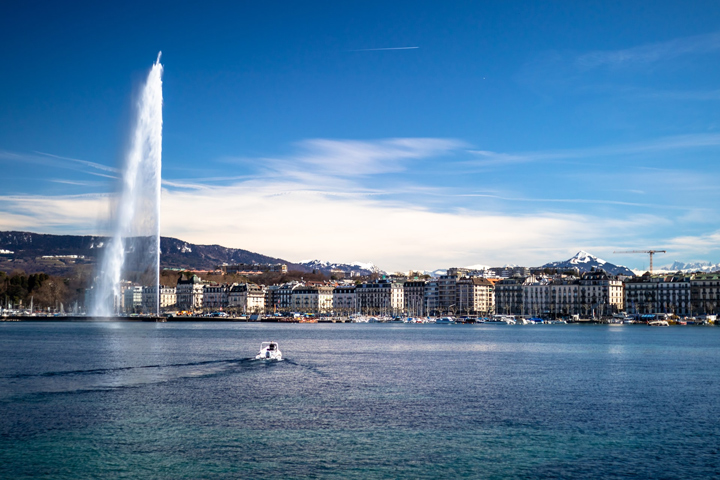
The easiest way to get to Chamonix is to fly to Geneva and grab an airport transfer to the town. There's lots of companies (cars and buses) offering these, we just recommend you book one in advance. You could also fly to Lyon or Grenoble, though these are slightly further away and transfers will be more costly.
You could also drive, catch a coach or take the train to Chamonix, the latter of which would be far better for the environment and would mean you don't have to squeeze your luggage into a set weight or size. It's totally up to you which way you get there, but you can guarantee they'll all have their scenic moments.
There are a variety of accommodation options whilst hiking the Tour du Mont Blanc, the most common being mountain 'refuges' or huts. These are little wooden chalets with a cozy sleeping area and good home-cooked food.
Some will sleep up to 80 and appear like a hotel, while others only sleep 24, so if you're booking them yourself make sure you get ahead. A lot of tour operators doing guided trips will blanket book beds way in advance so you can never be too early!
Some mountain are huts more basic than others, so do your research and decide what level of comfort and luxury you want when you're hiking. Usually you pay a deposit online and pay in cash on arrival, so don't forget to pick some of that up in Chamonix before you leave.
Don't expect WiFi or phone signal, but do expect to feel as if you're in the middle of nowhere making new friends with people on the same journey as you. Oh, and earplugs are essential for snoring roommates!
You can also camp on the Tour du Mont Blanc. There are campsites dotted around in the low-lying villages and wild camping can be an option higher up. Though frowned upon in visible areas like in the UK, it is generally tolerated if you camp in vicinity to a refuge and head over for an evening meal.
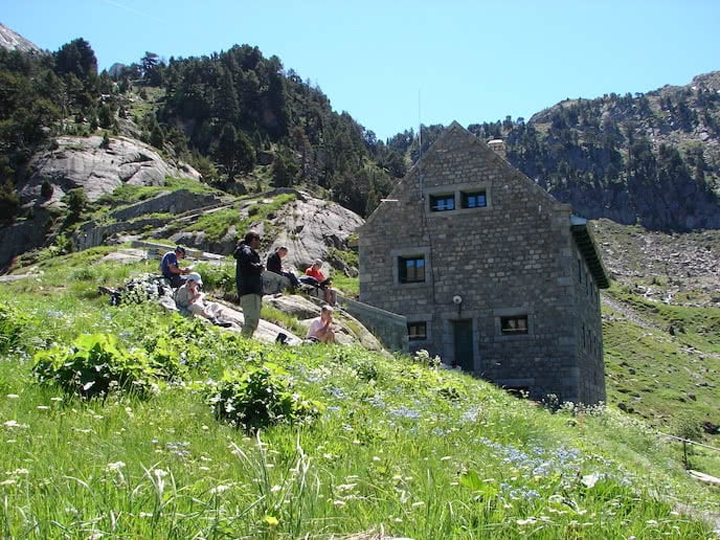
There's a few options here. If you're planning on hiking the Tour du Mont Blanc self guided, then you can either carry all your kit yourself, or look into booking luggage transfers, which would free you up to just carry a day pack, though it would put a bit more pressure on to get to the right destination each night (and stop you from camping of course!)
If you're booked onto a guided Tour du Mont Blanc trip, they will generally sort luggage transfers for you which again just means less hassle on the logistics side of things so you can be free to just enjoy the trekking.
The Tour du Mont Blanc trail packs in a LOT. Verdant forests, steep cols, sweeping views, rickety bridges and roaring glacial rivers will be a daily part of the trek. The remote mountain refuges tucked in the middle of nowhere, packed with hikers gathered around a table of home-cooked food has to be a highlight too. How often do we share a meal with a stranger, without any technology to distract us?
The wildlife is up there too. You'll be lucky if you see an Ibex but if you do, they're a real sight to behold. Marmots, mountain hares, birds of prey, foxes, boars and stoats share a home here too, along with a huge range of stunning flora and fauna.
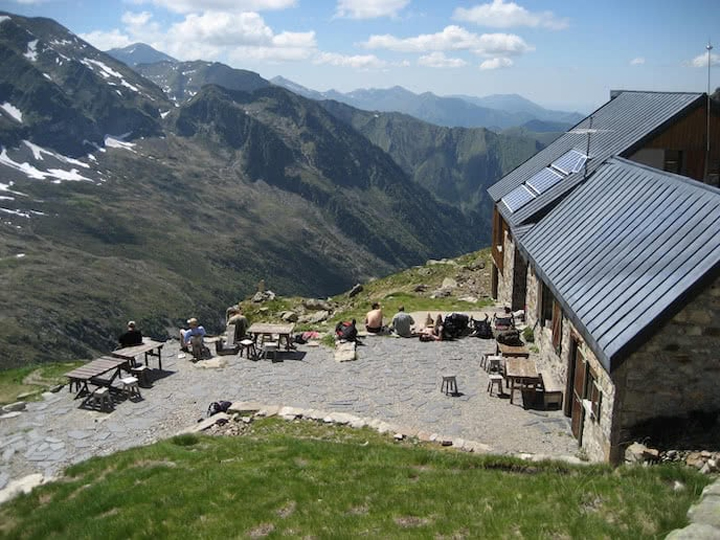
You will slow down on the trail. You'll stop to appreciate a beautiful flower, a crystal clear river, or the local farms in their traditional practices. 2 weeks hiking somewhere like this will leave you feeling completely renewed.
As for the views, the leg from Argentière to Les Houches in the French Alps is pretty special, and the sight of the Mont Blanc massif from the Col de la Seine and Grand Col Ferret is unforgettable.
The climb up to Lac Blanc will be sure to stay in your memory for a while too. Regarded as one of the most beautiful lakes in western Europe, it is totally surrounded by mountain summits and its turquoise glacial waters shimmer in the sun like nothing you've ever seen. A must visit, even if you're not completing the Tour du Mont Blanc.
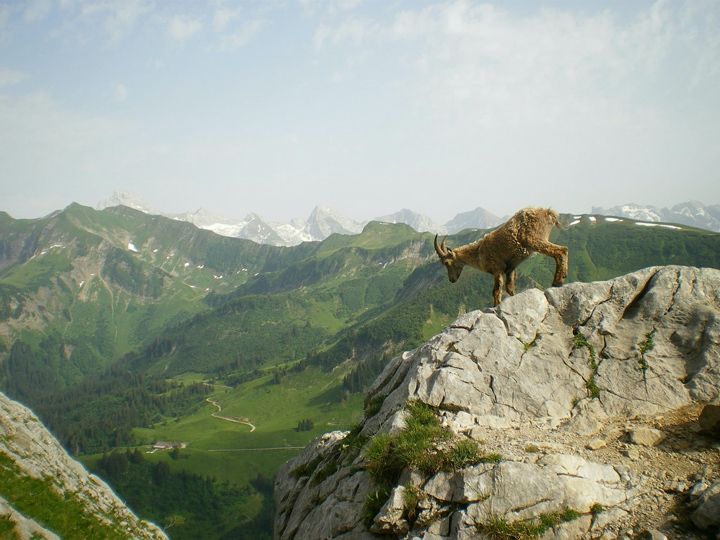
If you're a seasoned hiker, chances are most of the kit you already own will work well. Don't go out buying new hiking boots for example, if the ones you currently own work well and are broken in. There's nothing worse than having to cut your walk short because of searing blisters from new boots.
Same with your rucksack. if you have one big enough, that you're used to and fits you comfortably, go with that. If not, why not ask a friend first if you can borrow one or try find one second hand? The world is already full of so much outdoor gear that it's always good to think about how we van minimise our consumption.
Other essential pieces of kit will include a first aid kit, detailed maps and a compass, lots of layers (including the rainproof ones), a head torch, lightweight and comfortable shoes for the evening (flips flops, crocs or slippers work well here) and any sleeping and cooking equipment you might need.
Below is a packing list for people camping the Tour du Mont Blanc, so if you're staying in a refuge or getting luggage transfers you might obviously be able to take more or less.
Sample packing list:
You needn't be a super athlete to complete the Tour du Mont Blanc, but you should be comfortable walking 6-8 hours a day on rocky or hilly terrain. Stamina is more important than anything, as it's not a quick blast up a mountain but rather something you need to sustain over 10 days.
Making a few basic life changes will help your train for the Tour du Mont Blanc. Switching up your commute is a good example. Can you walk all or part of your commute without having to set aside too much time? Or how about instead of meeting a friend for coffee, get a takeaway and walk?
Use your lunch breaks and evenings to go for wanders and if you have a smart watch, see if you can get at least 10,000 steps a day in. All of this will improve your general level of fitness and get you geared up to completing the Tour du Mont Blanc in no time.
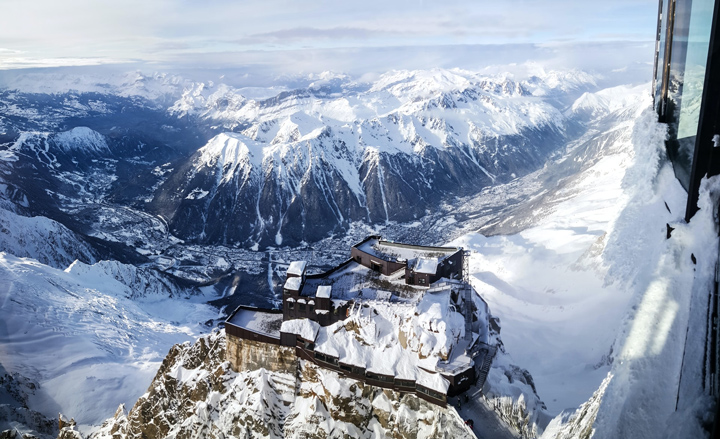
Less technical than you might think, as the trails on the Tour du Mont Blanc are well trodden and easily completable by leisure walkers. You'll be covering around 1000m in ascent each day, which is the equivalent to climbing Snowdon, so a familiarity with hill-walking is definitely preferable. Good 3-season hiking boots with proper ankle support will also help.
You needn't worry about altitude sickness, as this doesn't start to affect you until you get to higher than 3000 - 4000m, and the highest you'll get to on the Tour du Mont Blanc is 2600-2800m. You may feel marginally shorter of breath when climbing but this is perfectly normal.
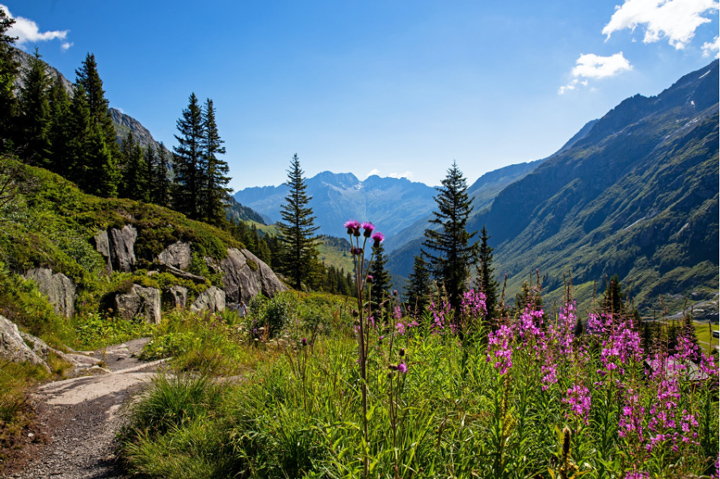
Great question. The simple answer is that it really depends on how you plan to complete the trek. Obviously someone doing a guided tour and staying in the nicest refuges will pay more than someone doing the trek self-guided and wild camping along the way.
This is our biggest piece of advice when hiking the Tour du Mont Blanc. Ensure that everyone in your group (whether you're with a guide or not) has a phone number for the local mountain rescue services for each country. In the event that you become separated from your group or something happens, you will be completely stuck without this option.
Mountain rescue costs a minimum of €5000, so having travel insurance in place is definitely something we'd recommend, whatever trip you're embarking upon. Travel and trip cancellation insurance is always good too in these Covid insecure times.
We mentioned this before, but you can never be too prepared when it comes to booking accommodation. The refuges on the Tour du Mont Blanc trail are notoriously popular and book up quickly. Get your deposits down way in advance so you can focus on your route planning and training!
Lots of refuges on the Tour du Mont Blanc don't accept credit card and will expect you to pay for the remainder or all of your booking in cash. Don't forget you'll be trekking through France, Italy and Switzerland, so you'll need both euros and francs.
You'll be able to take cash out from the ATM in Chamonix, Les Houches, Les Contamines, Courmayeur, La Fouly, Champex-Lac and Argentière.
The Tour du Mont Blanc, whilst a popular trek, is not without its dangers. Weather and terrain can be changeable up in the high mountains and it's imperative that you always carry a first aid kit and any medical supplies you might need to call on.
Oh, and a further top tip? Stock up on these things in the UK, French pharmacies are incredibly expensive!
This ones pretty obvious, but setting off early isn't just the best time to go for busy trails, it's also the safest. Setting off early will give you a bit of wriggle room if you get lost or tired and need a long break, and will ensure you're never walking in the dark. Allow an extra 2 hours per day on top of what your guidebook says.
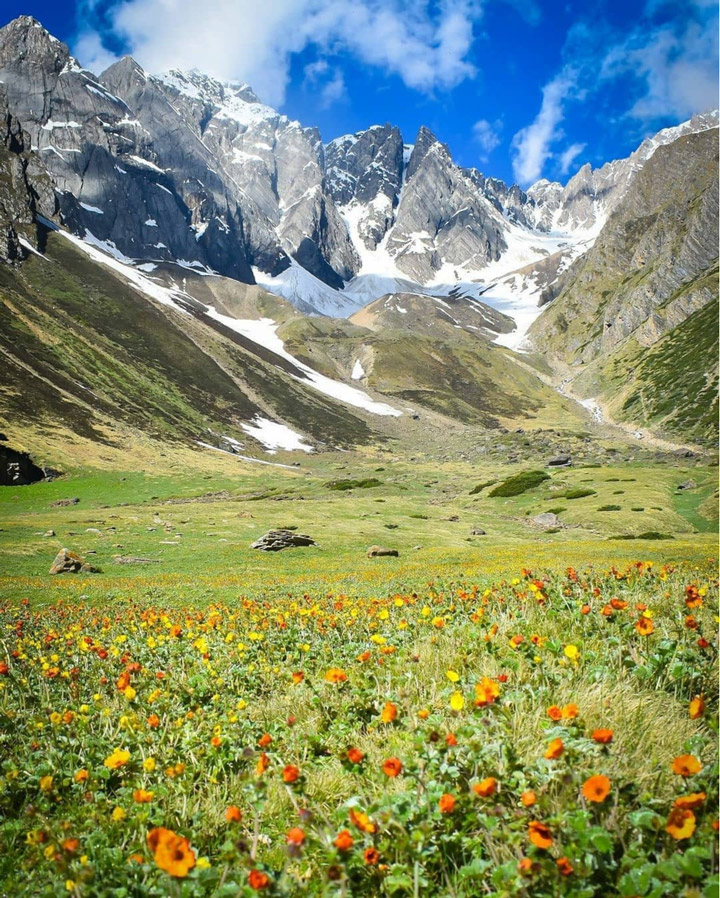
Nope, you can do it however you like. You can do half one year and come back to do the next. Or you can just do day hikes. You can do it faster, slower, on skis or in boots. Whatever you like! Just make sure whichever you choose you're prepared and know what you're doing.
Of course they can! Though children under the age of 10 might struggle stamina wise. You know your kids and what they're capable of however, so it's totally your call. They should be comfortable hiking for around 6-8 hours a day. You'll probably find they run up mountains a lot faster than us oldies!
So many reasons. Great Alpine cuisine, charming villages, the chance to walk through 3 countries in 2 weeks, some of the most stunning mountain vistas you'll ever see, a chance to spot marmots and wild ibex, making new friends in mountain huts and sampling some of Chamonix's bars and restaurants are amongst them. Have we convinced you yet?
You know your joints and the simple answer is, if you'd use them to climb a mountain in the UK, then take them on the Tour du Mont Blanc. If you're relatively fit and healthy and haven't needed poles before, you'll be fine.
People are often inclined to buy them thinking they're an essential part of gear and make you 'look the part' but they're only really necessary if you have painful knees coming downhill.
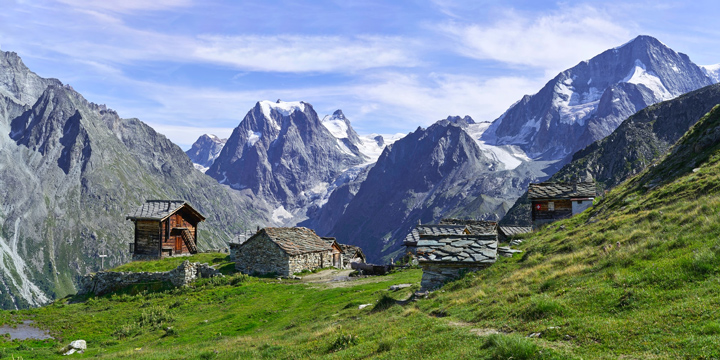
Fancy joining us on a 4 day hassle free trip where all the planning, logistics, and accommodation are all taken care of for you? Check out our Tour du Mont Blanc Best Bits adventure